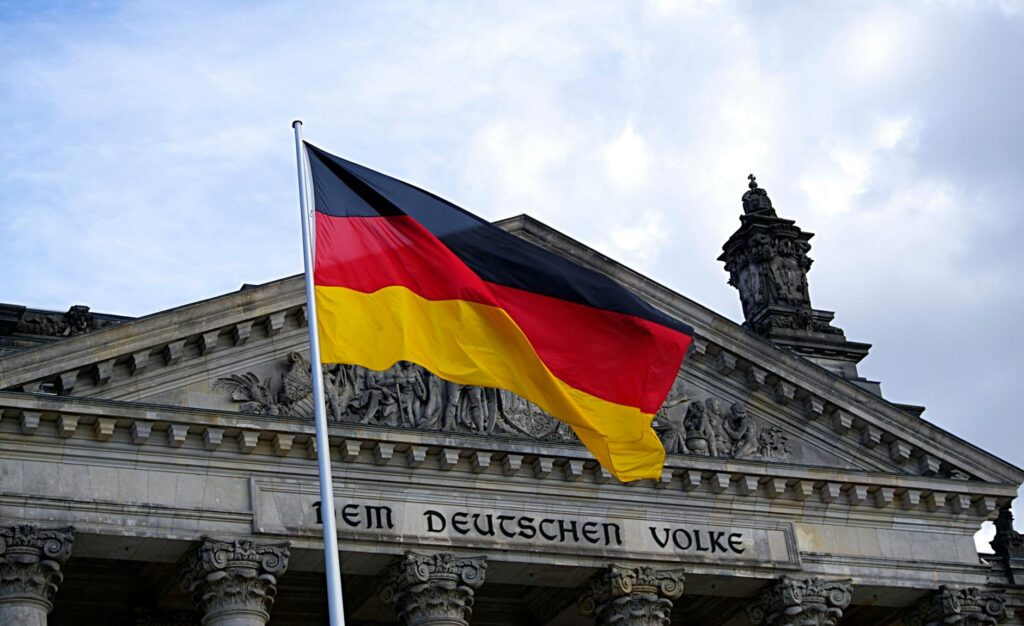Untangling the Web: How Nations Are Tackling Cryptocurrency Regulation and Taxation
Let’s be honest. Investing in cryptocurrency can feel like the wild west. One minute you’re riding high on a bull run, the next you’re staring at a sea of red, wondering what on earth just happened. But the biggest unknown for many isn’t the market’s volatility; it’s the constantly shifting sands of the law. The global approach to cryptocurrency regulation is a fascinating, confusing, and absolutely critical topic for anyone holding digital assets. It’s a patchwork quilt of bold experiments, cautious steps, and outright prohibitions. What’s perfectly legal in Zurich might get you a stern warning in New York and could be completely banned in Beijing. Understanding this landscape isn’t just for legal eagles; it’s essential for every investor’s strategy and peace of mind.
Key Takeaways
- No Universal Rulebook: Nations are adopting wildly different strategies, from El Salvador’s full embrace of Bitcoin as legal tender to China’s strict ban.
- Innovation vs. Protection: Regulators are walking a tightrope, trying to foster technological innovation while protecting consumers from fraud and market manipulation.
- Taxation is a Minefield: Most countries treat crypto as property, leading to complex capital gains tax implications. Meticulous record-keeping is non-negotiable.
- Harmonization is Coming: Major economic blocs like the EU are leading the charge with comprehensive frameworks (like MiCA) that could set a global standard.
- The US is Complicated: The United States employs a ‘regulation by enforcement’ model with multiple agencies like the SEC and CFTC creating a complex and often confusing environment for crypto projects.
Why Can’t Everyone Just Agree? The Core Regulatory Dilemmas
Before we jump into a world tour, it helps to understand why governments are so tangled up. It’s not just about control. They’re grappling with some genuinely tough questions. How do you protect investors from scams without stifling a revolutionary technology? How do you stop criminals from using crypto for money laundering and terrorist financing? Big questions. The Financial Action Task Force (FATF), an international watchdog, has set guidelines, like the ‘Travel Rule’, which requires crypto service providers to share sender and receiver information for transactions. But implementing these ideas consistently across borders? That’s the real challenge. On top of that, every nation has its own economic priorities, political climate, and tolerance for risk. So, you end up with the global mosaic we see today.
The Americas: A Continent of Contrasts
Nowhere is the diversity of approach more apparent than in the Americas. From the world’s financial superpower to a small nation betting its future on Bitcoin, the strategies couldn’t be more different.

United States: The Patchwork Problem
Ah, the USA. When it comes to crypto, the best word to describe its approach is… fragmented. There’s no single, all-encompassing law. Instead, a handful of powerful agencies are jostling for jurisdiction, creating a confusing and often adversarial environment. It’s ‘regulation by enforcement’, which means rules are often created through court cases rather than clear legislation.
- The SEC vs. The World: The Securities and Exchange Commission (SEC) has taken an aggressive stance, arguing that many cryptocurrencies are ‘unregistered securities’. This has led to high-profile lawsuits against companies like Ripple (XRP) and Coinbase. Their argument? If people are investing in a token with the expectation of profit based on the efforts of a central group, it’s a security. Simple, right? Not really.
- The CFTC’s Role: The Commodity Futures Trading Commission (CFTC) views major cryptocurrencies like Bitcoin and Ether as commodities, like gold or oil. This creates a fundamental conflict with the SEC’s position. Who’s right? The courts are still deciding.
- Taxation Headaches: The IRS is crystal clear on one thing: crypto is property. This means every time you sell, trade, or even use crypto to buy a coffee, you’re creating a taxable event. You have to calculate the capital gain or loss on that transaction. It’s an accounting nightmare.
El Salvador: The Bitcoin Bet
In 2021, El Salvador did something no other country had dared: it made Bitcoin legal tender alongside the U.S. dollar. It was a radical move, aimed at boosting financial inclusion for the 70% of its population without bank accounts and reducing fees on remittances from abroad. The government launched a digital wallet, Chivo, and airdropped $30 worth of Bitcoin to citizens to kickstart adoption. The results? It’s been a mixed bag. While it put the country on the map for crypto enthusiasts and tourists, widespread domestic adoption has been slow, and the move has drawn criticism from the IMF due to Bitcoin’s volatility. It remains a fascinating, real-time experiment.
Canada: A Measured Approach
Our neighbors to the north have taken a much more straightforward path. Canada was one of the first countries to approve Bitcoin ETFs, giving mainstream investors easy access. Regulators have provided relatively clear guidance:
- Cryptocurrencies are generally treated as commodities.
- Crypto exchanges and payment processors must register with the Financial Transactions and Reports Analysis Centre of Canada (FINTRAC) as Money Services Businesses (MSBs).
- Tax-wise, it’s similar to the U.S., where crypto is treated as property subject to capital gains tax.
This clarity has made Canada a more predictable, if less explosive, market for crypto businesses.
Europe: The Quest for a Unified Rulebook
Tired of the American patchwork? Europe is trying to build the opposite: a single, comprehensive framework for the entire bloc. It’s a monumental undertaking, but one that could shape global cryptocurrency regulation for years to come.
The European Union and MiCA
The star of the show in Europe is the Markets in Crypto-Assets (MiCA) regulation. This landmark piece of legislation, set to be fully implemented by the end of 2024, aims to create a harmonized legal framework across all 27 EU member states. It’s a game-changer.
What does MiCA do?
- Brings Order to Chaos: It establishes clear rules for crypto-asset issuers and service providers. No more guessing games.
- Boosts Consumer Protection: It enforces transparency, disclosure, and authorization requirements for crypto projects.
- Tackles Stablecoins: It sets stringent rules for stablecoin issuers to ensure they have adequate reserves and can meet redemption requests, a direct response to debacles like the Terra/Luna collapse.
- Creates a ‘Passport’: Once a crypto company is authorized in one EU country, it can ‘passport’ its services across the entire union. This is huge for scalability.
MiCA isn’t perfect—it largely leaves out DeFi and NFTs for now—but it’s the most comprehensive attempt yet to regulate the industry on a massive scale.
United Kingdom: Forging Its Own Path
Post-Brexit, the UK is charting its own course. The approach is cautious but constructive. The government has declared its ambition to be a ‘global cryptoasset technology hub’. The Financial Conduct Authority (FCA) is the primary regulator, focusing heavily on anti-money laundering (AML) rules and cracking down on misleading crypto marketing. They are moving towards regulating stablecoins as a form of payment and are exploring a ‘digital pound’, but the overall framework is still a work in progress.
Switzerland: The Original ‘Crypto Valley’
Long before it was cool, Switzerland, particularly the canton of Zug, was embracing blockchain. It has cultivated a reputation as ‘Crypto Valley’ thanks to its proactive and clear regulatory stance. The Swiss Financial Market Supervisory Authority (FINMA) has issued clear guidelines, distinguishing between payment, utility, and asset tokens. This clarity has attracted hundreds of crypto companies, including the Ethereum Foundation. Switzerland offers specialized banking and fintech licenses, making it one of the most mature and welcoming jurisdictions for legitimate crypto projects.
Asia-Pacific: A Region of Extremes
The Asia-Pacific region is a vibrant, dynamic, and utterly fragmented landscape for crypto. It’s home to some of the most crypto-friendly hubs, the strictest bans, and the most active trading populations on the planet.

Japan: The Cautious Pioneer
After the infamous Mt. Gox exchange hack in 2014, Japan became one of the first countries to implement serious crypto regulation. Its approach is heavily focused on consumer protection. Exchanges must be licensed by the Financial Services Agency (FSA), maintain strict security standards, and keep customer funds separate from company assets. Crypto is legally recognized as ‘property value’, making it a relatively stable and predictable environment.
Singapore: The Balancing Act
Singapore has long been viewed as a fintech and crypto hub. The Monetary Authority of Singapore (MAS) has adopted a forward-thinking approach, but it’s not a free-for-all. They distinguish between tokens that are securities (regulated) and those that are not. Recently, however, the MAS has been tightening the screws, especially on retail investor access and advertising. They want to be a hub for the technology and wholesale markets, but they are deeply skeptical about retail speculation.
China: The Great Firewall
China’s journey with crypto is dramatic. It was once the world’s epicenter for Bitcoin mining, accounting for over 65% of the global hashrate. Then, the government slammed on the brakes. Hard. In 2021, China enacted a blanket ban on all cryptocurrency transactions and mining. Why? The reasons are multifaceted: preventing capital flight, maintaining financial stability, and, crucially, paving the way for its own central bank digital currency (CBDC), the digital yuan (e-CNY). It’s a clear signal of control over innovation.
India: The Regulatory Rollercoaster
Few countries have been as hot-and-cold on crypto as India. For years, the industry was shadowed by the threat of an outright ban from the Reserve Bank of India. While a ban hasn’t materialized, the government introduced a punitive tax regime in 2022: a flat 30% tax on all crypto gains, with no ability to offset losses, plus a 1% tax deducted at source (TDS) on all transactions. This has severely dampened trading volumes and pushed many developers and companies to relocate.
The Universal Constant: Crypto Taxation
Regardless of where you are, if you’re making money from crypto, the taxman will want his cut. While the specific rules vary, a few common themes have emerged in how nations approach crypto taxation.
“The single biggest mistake crypto investors make is poor record-keeping. Every trade, swap, and purchase is a potential taxable event, and ‘I didn’t know’ is not a defense the tax authorities will accept.”
Most countries, including the US, UK, Canada, and Australia, treat cryptocurrencies as a form of property or an asset. This means:
- Capital Gains Tax: You pay tax on the profit you make when you sell or trade your crypto. The amount you pay often depends on how long you held the asset (short-term vs. long-term gains).
- Income Tax: If you earn crypto—through mining, staking rewards, airdrops, or getting paid for a job—it’s typically treated as regular income and taxed at your personal income tax rate.
- The Burden of Proof is on You: You are responsible for tracking the cost basis (what you paid) and sale price for every single transaction. This can get incredibly complicated, especially for active traders, making specialized crypto tax software almost essential.
Conclusion: A Maturing but Still Messy World
The global map of cryptocurrency regulation is far from complete. It’s a living, breathing entity that changes with market crashes, technological breakthroughs, and shifts in political winds. However, the trend is clear: the wild west days are ending. Regulation is no longer a question of ‘if’, but ‘how’ and ‘when’.
For investors and builders in the space, this is both a challenge and an opportunity. The ambiguity can be frustrating, but the increasing clarity from frameworks like MiCA brings legitimacy and opens the door for institutional adoption. The key is to stay informed. Follow the regulatory developments in your own country and in major global markets. Understand your tax obligations and keep meticulous records. The world of crypto is maturing, and the nations that find the right balance between innovation and protection will be the ones that lead the next phase of its evolution.


